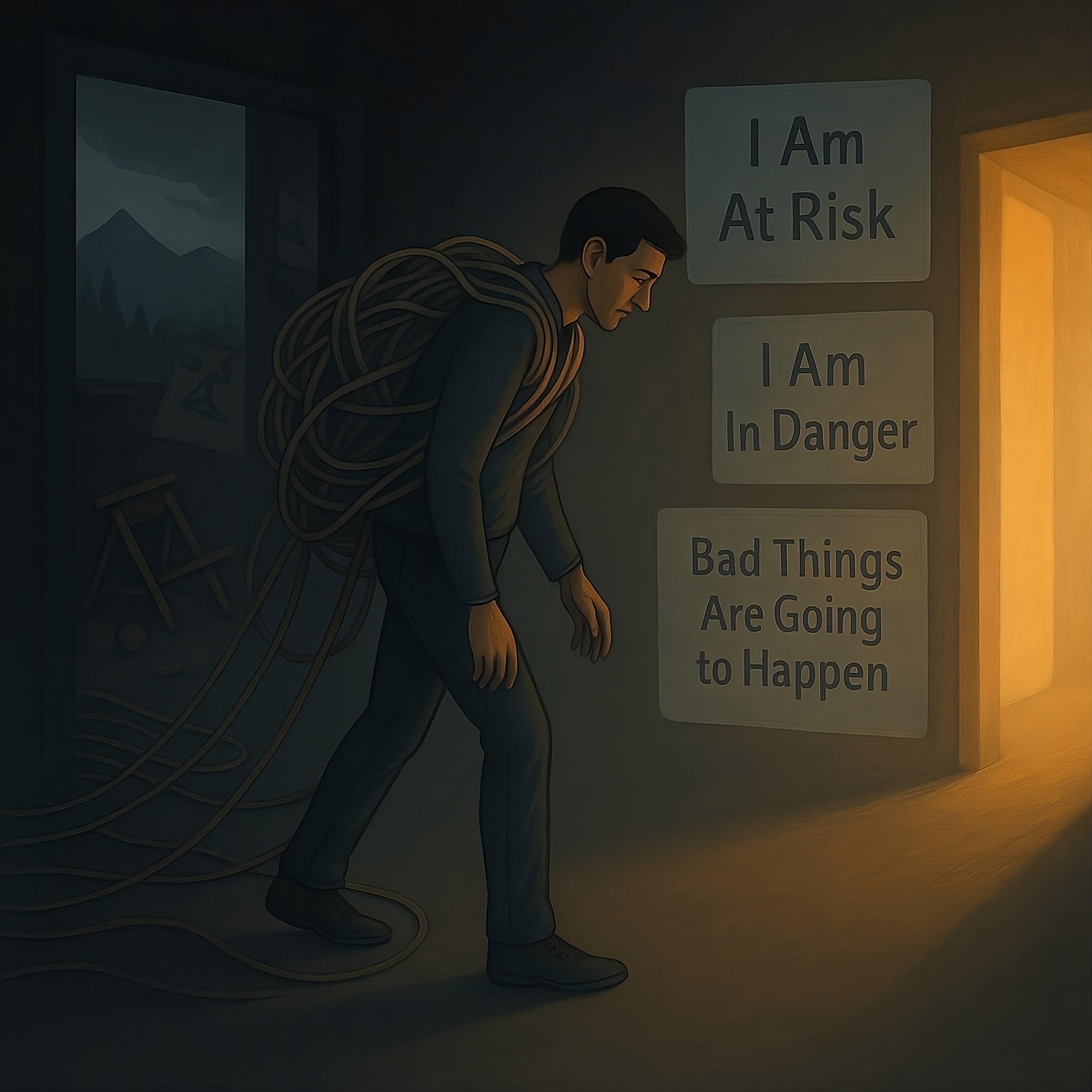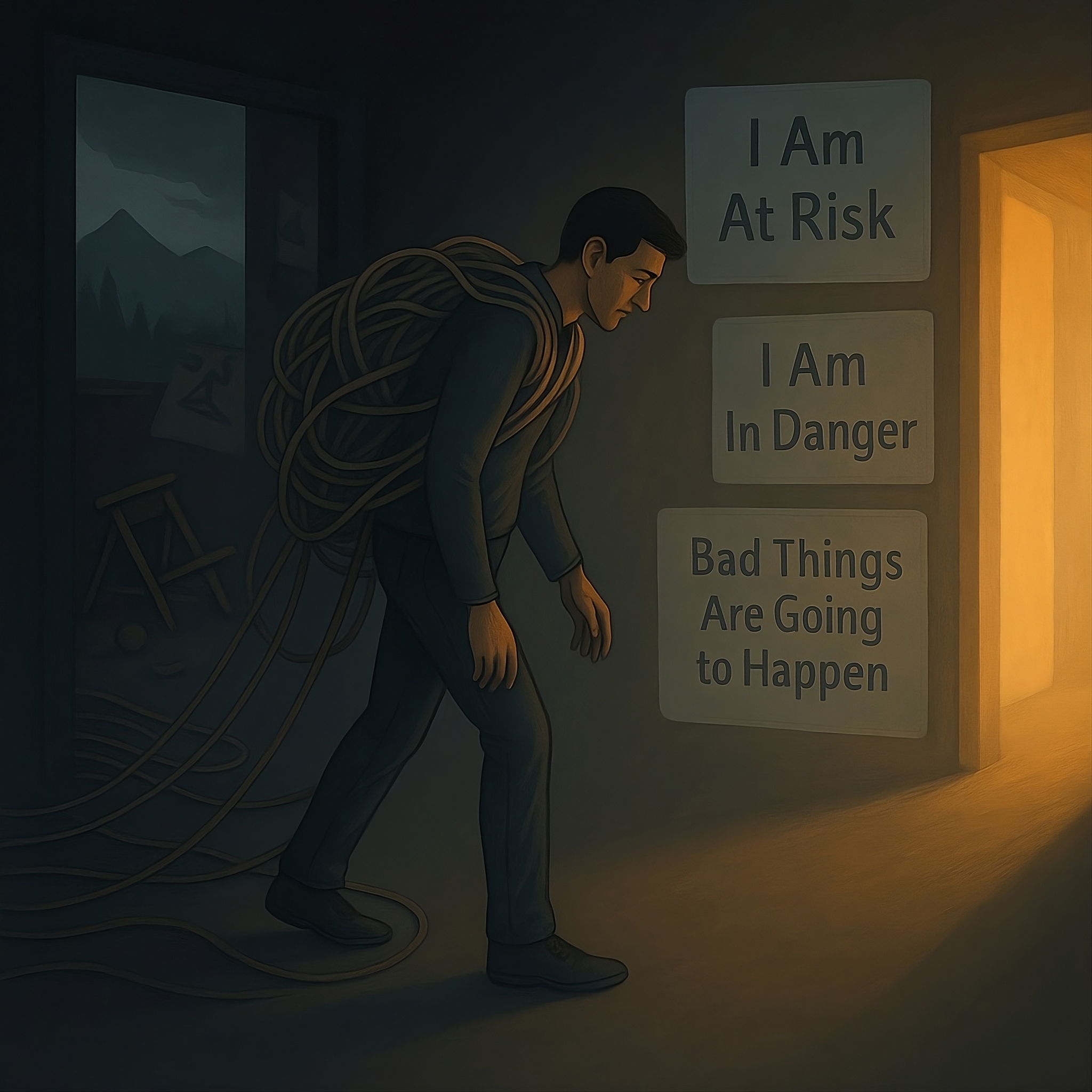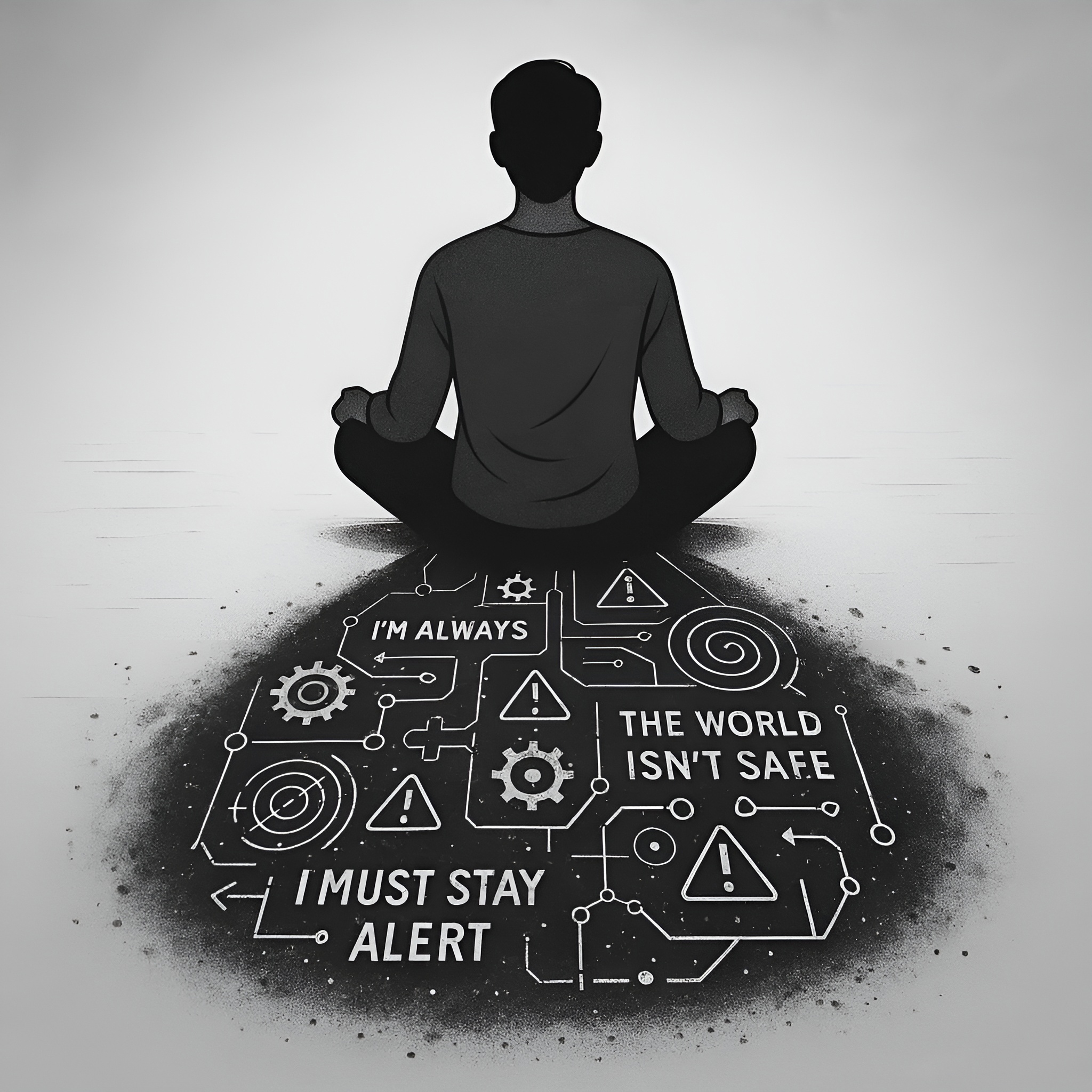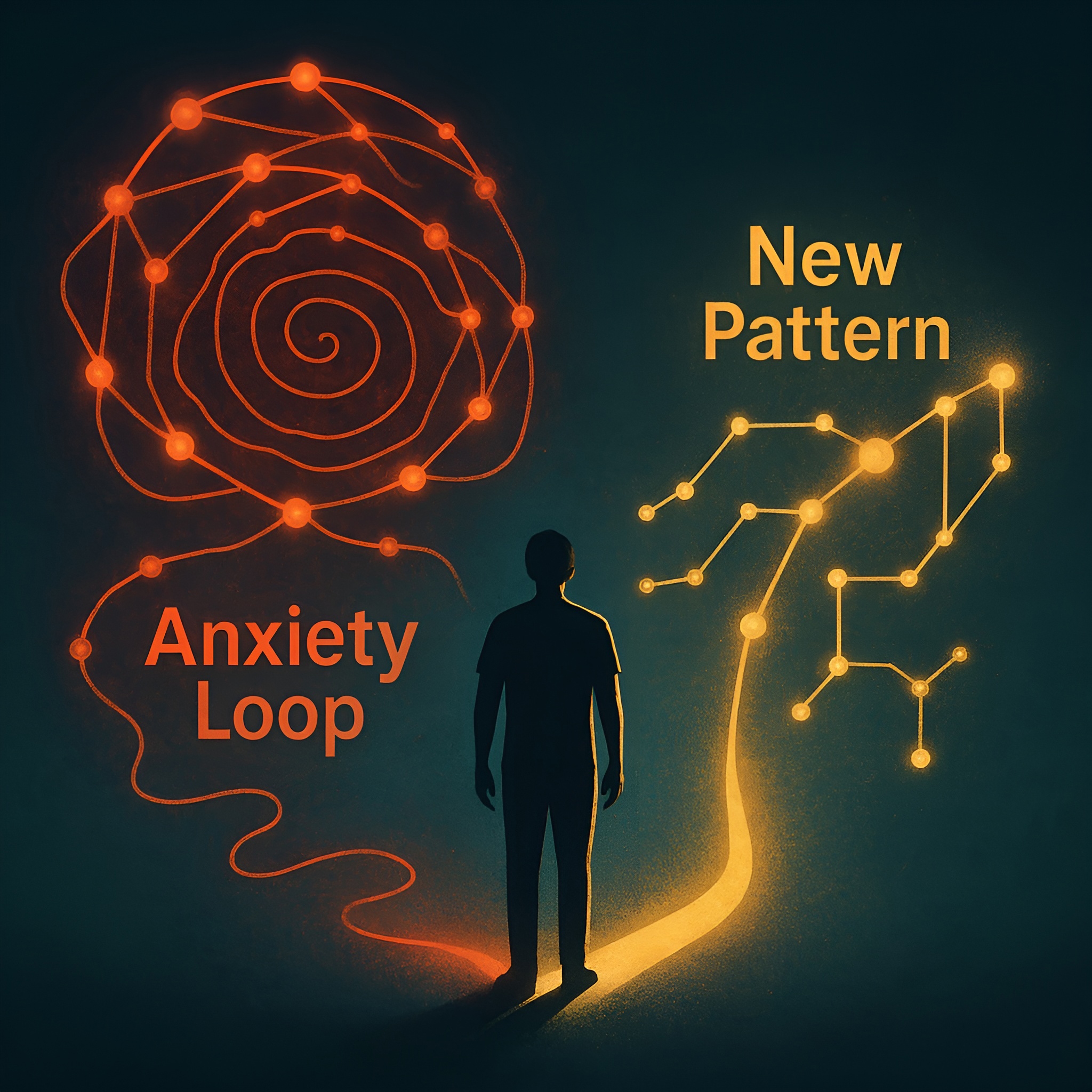Real Change Starts Where the Anxiety Loop Begins
Anxiety isn’t just about feeling nervous or overwhelmed. It’s the persistent pattern of fear, hypervigilance, and overthinking that hijacks your ability to rest, focus, and connect. Whether it shows up as panic attacks, obsessive thoughts, chronic tension, or irrational worry, anxiety can quietly run the show—dictating your behaviours, decisions, and even how you see yourself.
At ShiftGrit, we don’t just manage symptoms. We work with clients to identify and rewire the identity-level patterns that drive their anxiety response in the first place.
What Anxiety Really Is — And Isn’t
Many people think of anxiety as excessive worrying, but it’s more than that. At its core, anxiety is the nervous system reacting to perceived threats—often triggered by outdated beliefs about yourself, others, or the world.
That might sound like:
- “If I don’t control this, everything will fall apart.”
- “I need to be perfect or they’ll think less of me.”
- “If I slow down, I’ll lose everything I’ve worked for.”
These beliefs aren’t conscious—they’re reflexive. They live in what we call the Walnut Brain: the fast-acting, survival-focused part of your system that keeps you scanning for danger. When the Walnut Brain runs unchecked, anxiety becomes the default operating system.
The ShiftGrit Core Method: A Deeper Approach to Anxiety
Our proprietary therapy model—Identity Patterns Therapy—targets the underlying belief loops behind anxious thoughts and behaviours. Instead of teaching you to cope with anxiety, we help you update the internal rulebook that creates it.
This structured process includes:
Pattern Theory
We map the loop: the Limiting Beliefs, Dysfunctional Needs, and Opt-Out Behaviours that keep you stuck in anxiety cycles.
Reconditioning
We guide you through safe, imaginal exposures that reprocess these patterns—shifting the nervous system’s automatic response so the anxiety doesn’t fire in the first place.
Integration
We help install new, more adaptive belief systems that support confidence, presence, and peace of mind.
This process is especially effective for:
- Generalized Anxiety Disorder (GAD)
- Social Anxiety
- Panic Attacks
- Health Anxiety
- Specific Phobias
- Obsessive Thought Loops
Why Traditional Anxiety Strategies Fall Short
You can use mindfulness apps, breathing exercises, or thought reframes—and still feel anxious.
Why? Because most of those strategies work from the outside in, trying to soothe a system that’s still running fear-based programming underneath. Until that programming is updated, anxiety keeps coming back.
A Different Kind of Relief
The ShiftGrit Core Method isn’t about managing anxiety. It’s about helping your nervous system realize it no longer needs to protect you from something that isn’t actually dangerous.
With Identity-Level Therapy, you can:
- Feel calm without needing to earn it
- Stop second-guessing yourself
- Show up in situations that used to shut you down
- Experience clarity instead of chronic overthinking


From the Blog: Anxiety Patterns & Insights
Ready to Change the Pattern?
We offer anxiety therapy in Calgary and Edmonton—online or in person—with trained psychologists who specialize in identity-level change.
Explore:
👉 Anxiety Therapy in Calgary
👉 Anxiety Therapy in Edmonton




